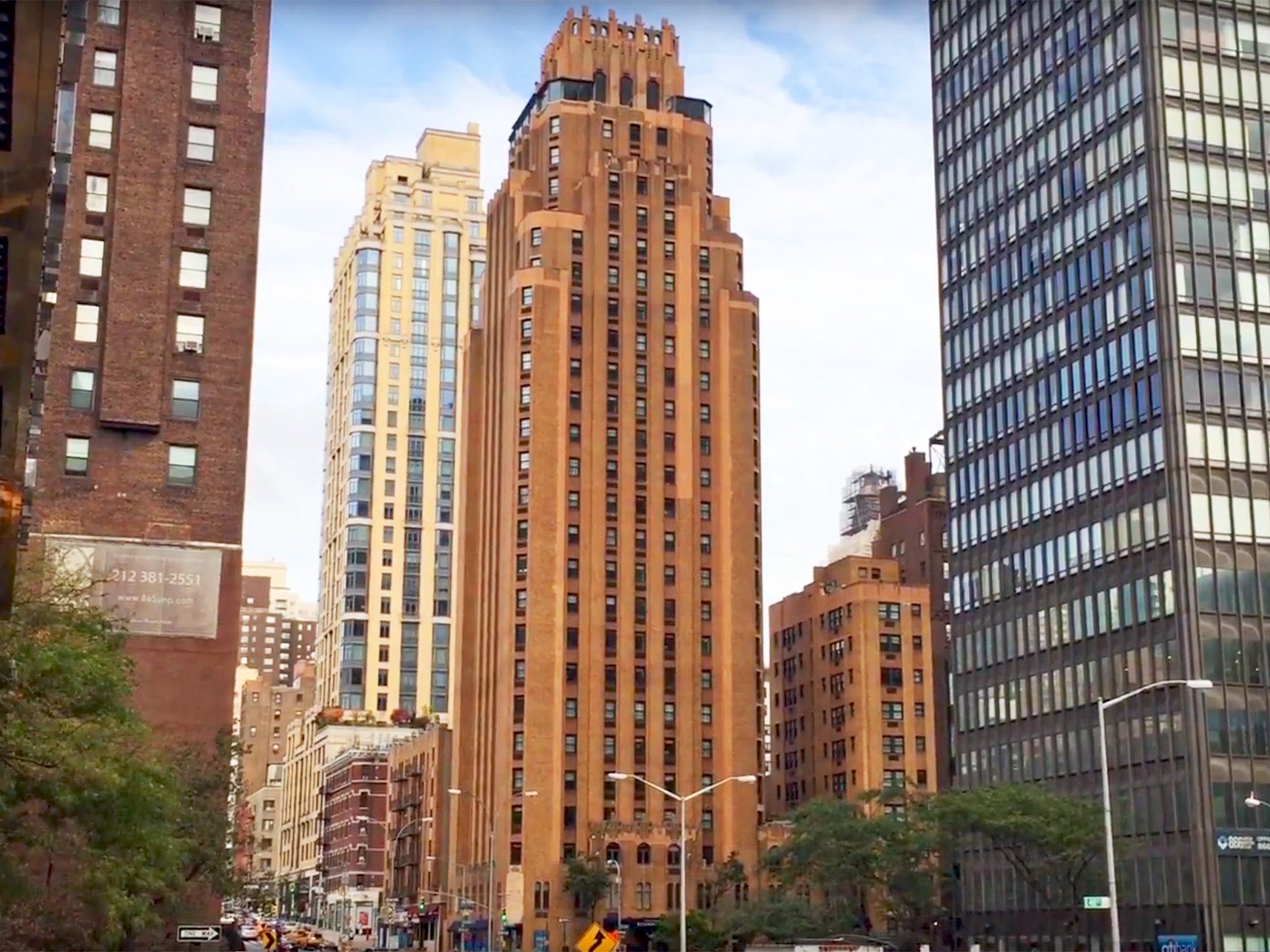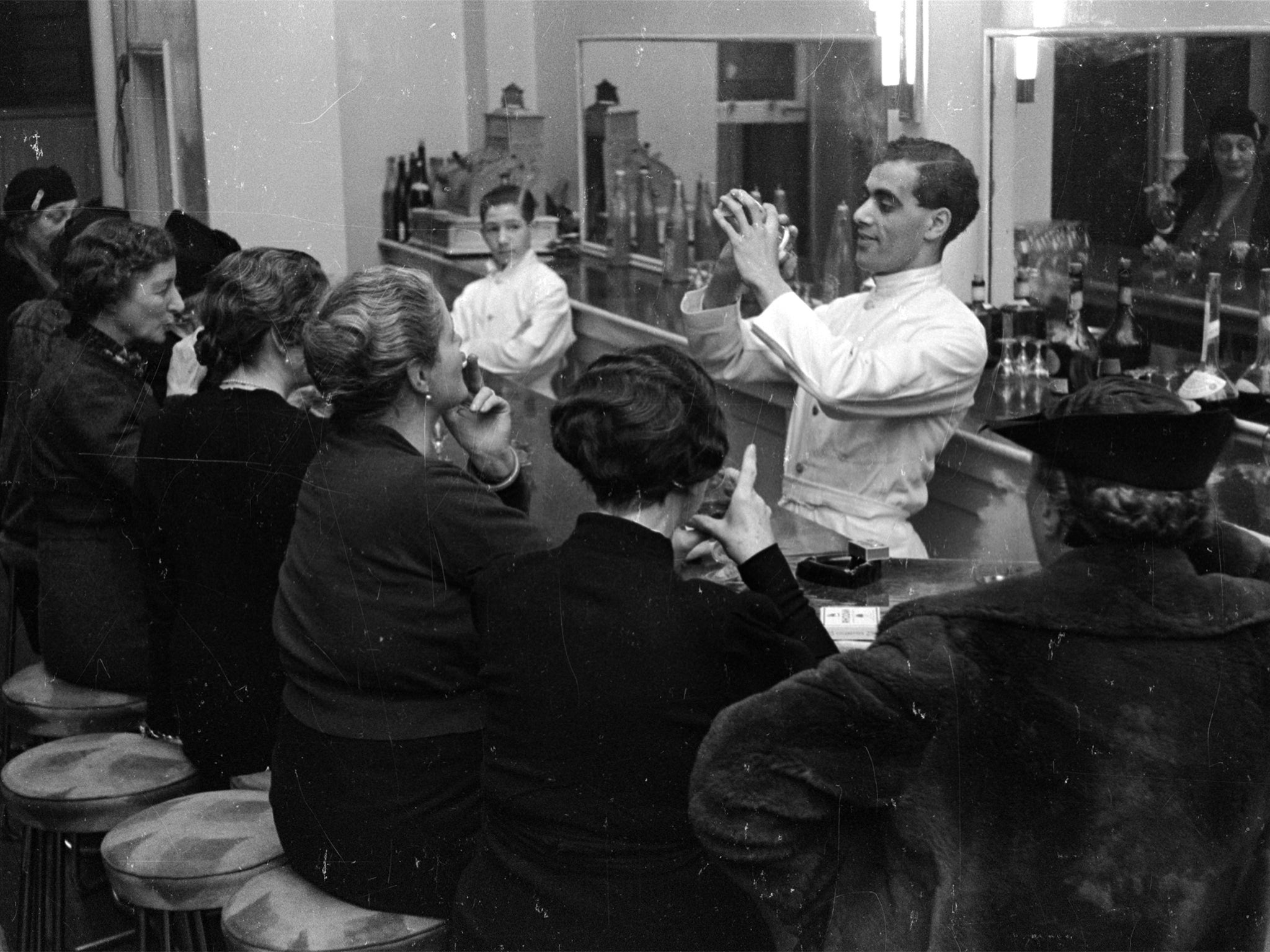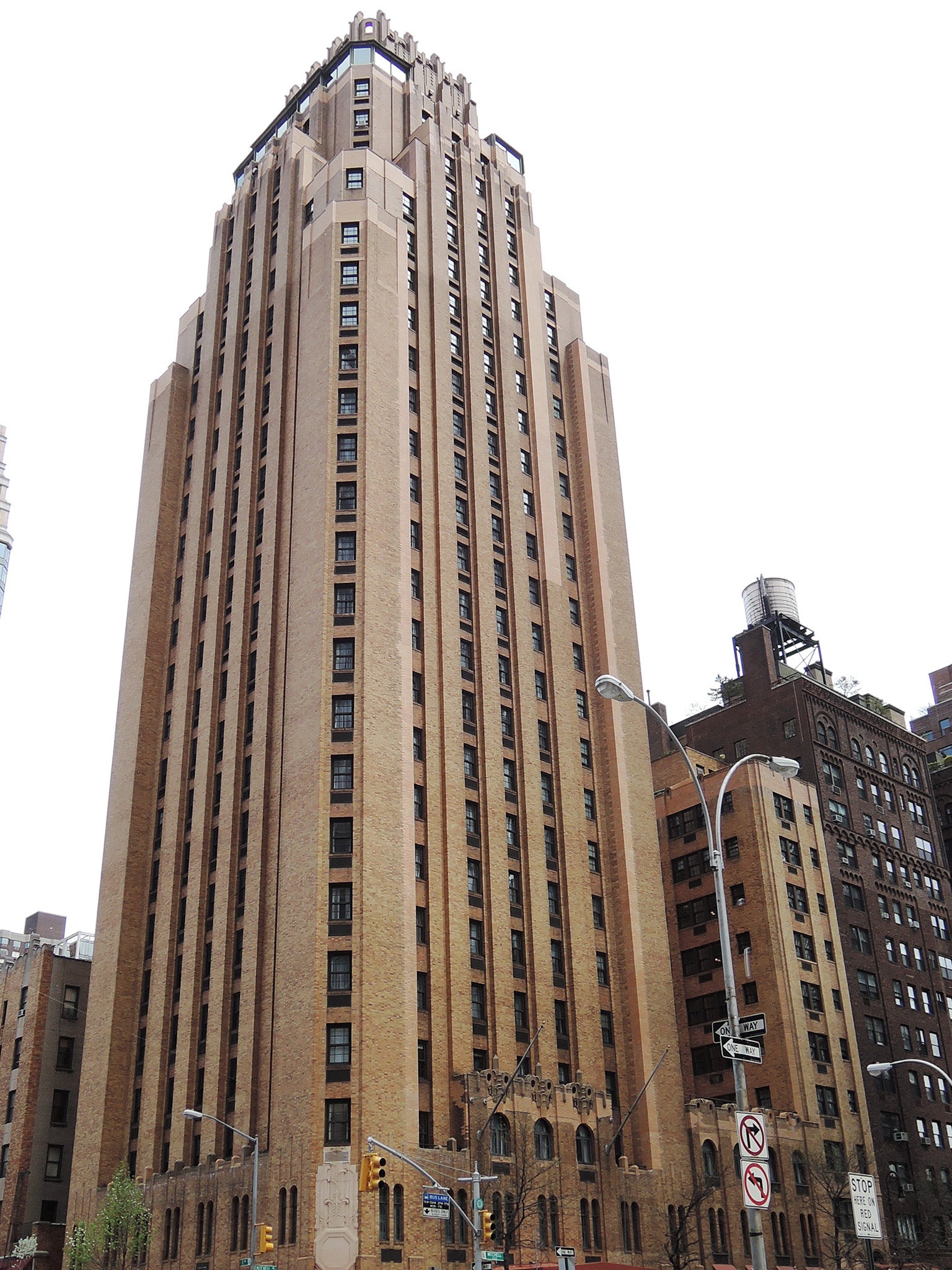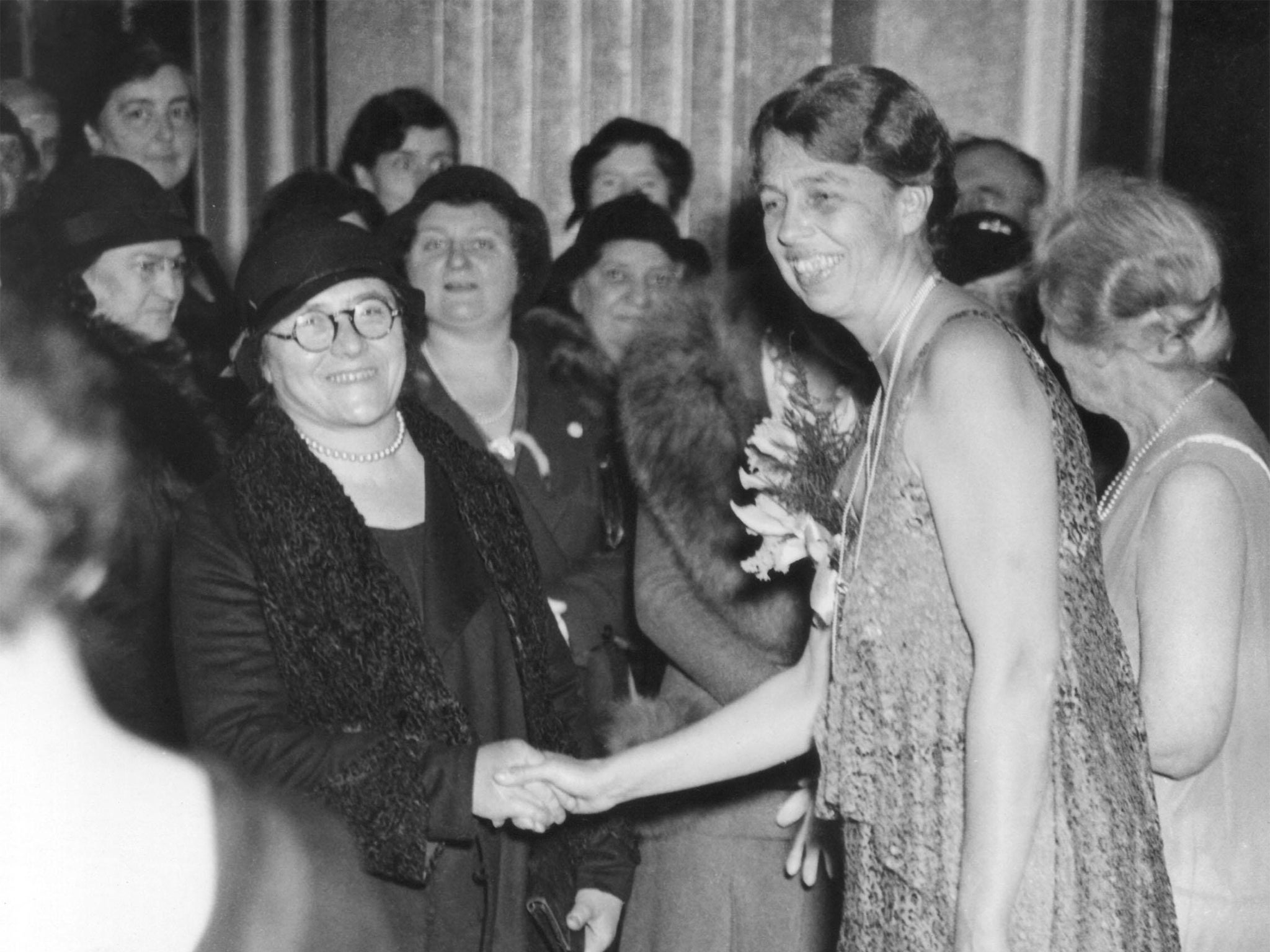The New York art deco hotel from the 1930s that was just for women
Ophelia, a rooftop bar with sweeping views of Midtown, was originally a solarium where single women living in the Panhellenic Tower would greet 'gentlemen callers'

Your support helps us to tell the story
From reproductive rights to climate change to Big Tech, The Independent is on the ground when the story is developing. Whether it's investigating the financials of Elon Musk's pro-Trump PAC or producing our latest documentary, 'The A Word', which shines a light on the American women fighting for reproductive rights, we know how important it is to parse out the facts from the messaging.
At such a critical moment in US history, we need reporters on the ground. Your donation allows us to keep sending journalists to speak to both sides of the story.
The Independent is trusted by Americans across the entire political spectrum. And unlike many other quality news outlets, we choose not to lock Americans out of our reporting and analysis with paywalls. We believe quality journalism should be available to everyone, paid for by those who can afford it.
Your support makes all the difference.On a recent spring evening, two young women, Amore Pistorius, 27, and Garima Deopura, 28, took the elevator to the 26th floor of Beekman Tower, in New York, an Art Deco landmark building from 1928 a few blocks north of the United Nations. They were headed to Ophelia, a recently revived rooftop bar.
When the doors opened, the women, both accountants at a private equity firm around the corner, were greeted by three double-height windows with delicate ironwork, a 24-foot pewter-cast bar with a glass inset holding curiosities from another era, and a mounted albino pheasant with its wings spread over a curated collection of spirits.
They were led to the terrace, with its 360-degree views of Manhattan, and took a seat on a red velvet-covered bench. Both ordered the Bullet Proof, a photogenic play on a whiskey sour featuring rye, St Germain, turmeric, lemon, chili and bitters with a foamy egg white that Pistorius had seen on Instagram. The two chatted about their families, dating, work gossip and what it’s like to live in New York – Pistorius is from South Africa, and Deopura moved to Manhattan in 2016 from California.
Whether they knew or it not, these women were continuing a legacy from 1928, when the Beekman Tower, then called the Panhellenic Tower, opened as a women’s clubhouse, dormitory and social hub for sorority sisters who had recently graduated and were moving to New York in record numbers to join the workforce.
In the years leading up to the Depression, it was increasingly common for women to have a gap between college and marriage, with many of them moving to the city for work, said Joanna Scutts, the author of The Extra Woman: How Marjorie Hillis led a Generation of Women to Live Alone and Like It.
The rooftop bar was originally a solarium, which provided a common space for the building’s female residents to relax – and to receive “gentlemen callers”, according to a brochure of the time.

The ability to “bask” under glass year round was advertised as part of the building’s commitment to its residents’ health, Scutts said. “The rooms would’ve been tiny, very simple dorm rooms, but you would come up here and you could read and hang out with your friends in this beautiful space.”
The Great Depression changed everything. The Panhellenic was forced to accept non-sorority women in 1931 and then men as well in 1934, when it was rebranded as Beekman Tower. In 1940, the solarium was converted into a bar called Top of the Tower, which over the years would become a favourite haunt of employees of the UN and celebrities such as Frank Sinatra and Pearl Bailey.
In 1964, the Panhellenic House Association sold the building and the new owners converted the dorm rooms into apartments for a residential hotel. Top of the Tower remained open to the public – it was best known among locals in the know as a once-grand, now-dusty and dated spot with so-so drinks and gorgeous views – until it closed in 2013.
Five years later, Merchants Hospitality Inc, which now owns the rooftop bar, has updated the space by simultaneously getting rid of a certain 1980s pallor that had settled in and choosing to highlight its former Art Deco and early feminist glory with plush fabrics and vintage memorabilia.
The Panhellenic Tower was the idea of Emily Eaton Hepburn. Hepburn, a member of the sorority Kappa Kappa Gamma who graduated from St Lawrence College and Barnard College, devoted herself to civic and social causes, most notably women’s suffrage. After her husband died in 1922, she became president of the Panhellenic House Association in 1925. “After women won the vote in 1920, Hepburn saw the sororities as continuations of the spirit of that campaign,” Scutts said.
Hepburn, who also helped open the Theodore Roosevelt house-museum in 1923, was drawn to the Panhellenic Tower project to “prove that women could do big business”, according to her biography. In 1926, she purchased the site at 49th Street and First Avenue, hiring the architect John Mead Howells to build the skyscraper. Construction began in 1927, and by the following year, residents had started to move in.
Hepburn not only developed the building herself – adding details like a scattering of Greek letters on the building’s base, and hiring the renowned sculptor Rene Paul Chambellan to add ornamental Art Deco-style carvings – but also ensured that upon its completion, the trustees who ran it would all be women. By 1928, Hepburn had turned the building over to the Panhellenic House Association. It was the only hotel in New York at the time to be owned and managed by women, according to a 1929 sorority publication.

The building was celebrated for its dramatic design and ingenious solution to a housing crisis. While the 380 rooms were decorated simply, the solarium was highlighted by Robert Stern in his book New York 1930 for its “dark tones and sinuous patterns on the wall” and “waving fronds of metallic foliage applied around the central elevator door, tall lancet windows, and French-influenced furniture”.
But as the decades wore on, these design elements went out of fashion. A 1970 review of the Top of the Tower’s $3.25 lunch buffet by Craig Claiborne of The New York Times said: “There is nothing wrong with the tawdry interior of the Top of the Tower that an accomplished designer couldn’t improve.”
That happened in 2017, when Merchants Hospitality acquired the rooftop lounge. Soon, a female design team, Public Agenda, had been hired to update the rooftop. Laura Mueller-Soppart and Eliza Liepina, the founders of Public Agenda, met through a more modern communal housing version of the Panhellenic Tower: Airbnb. In 2015, Liepina was visiting New York and stayed in Mueller-Soppart’s apartment.
The two discovered they had a lot in common, both working in real estate development – Mueller-Soppart for Two Trees and Liepina for WeWork, as its development manager in Germany. They started Public Agenda in 2016 and had recently partnered with Merchants to design a speakeasy-style bar also in Midtown, Sugar East.
Mueller-Soppart and Liepina were immediately taken with Beekman Tower. “We were inspired by the history and strong female narrative surrounding the lounge and needed to pay respect to it,” Mueller-Soppart said.
“You have a responsibility to the history of the space and the community of the building,” Liepina said, “as well as a responsibility to create a space that actually works for the people that will use it in the future.”
Public Agenda then hired other women who they felt would respect the building’s history to customise furniture and consult on finishes and design the graphics and website. Early on, the designers came up with the idea of a cabinet of curiosities.
For this, an antiques specialist was hired to source items from the first half of the 20th century. The most exciting finds were items with direct provenance to the building, like postcards with images of Beekman Tower and a matchbox from Top of the Tower, which are displayed on shelves on either side of the bar – or in the bar itself, inside its glass inset.

There are also various sorority ephemera, about 100 mounted butterflies, a silver etched vanity set from 1930s New York and a Kewpie doll, which Scutts noted has ties to the woman’s suffrage movement. But some people find themselves missing the old bar. Ann Seligman, 67, has lived in the neighbourhood for 25 years. She first remembers going to the Top of the Tower around 2001, and it soon became her favourite place to bring out-of-towners.
“The last time I went, there was a big comet in New York, I think that was in 2012, and I went with a friend because we thought that would be the place we could get a good view of the comet.”
After recently going to Ophelia, Seligman found herself missing the old incarnation. “The design is lovely and there’s not any particular thing I can point to, but in an overall way I feel like the previous décor was more genuinely Art Deco than this is,” she said.
“I hate to say it, but I probably prefer the old.”
Luckily for Seligman and other nostalgic New Yorkers, the views remain no less dazzling.
© New York Times
Join our commenting forum
Join thought-provoking conversations, follow other Independent readers and see their replies
Comments